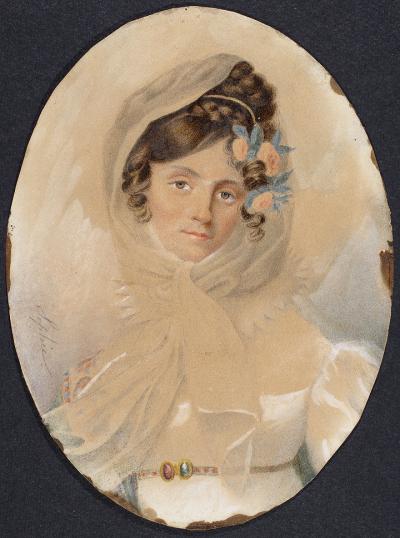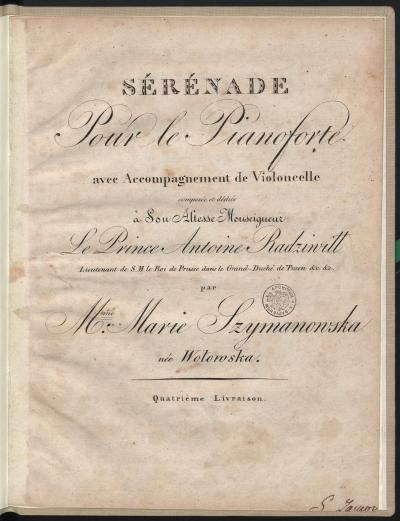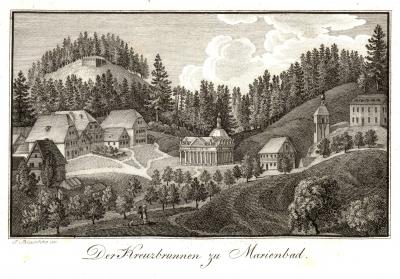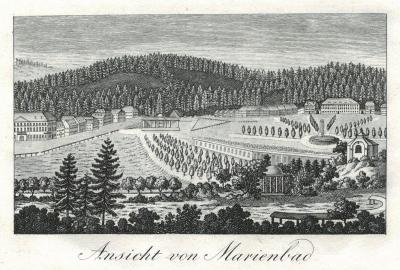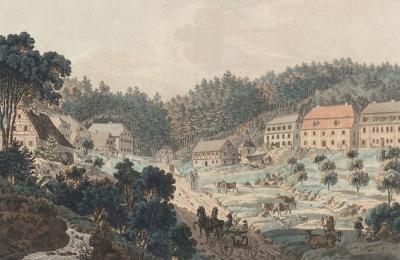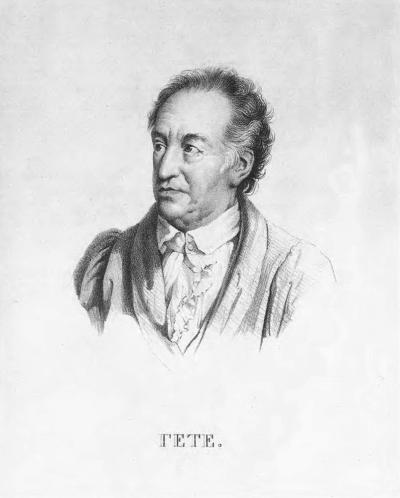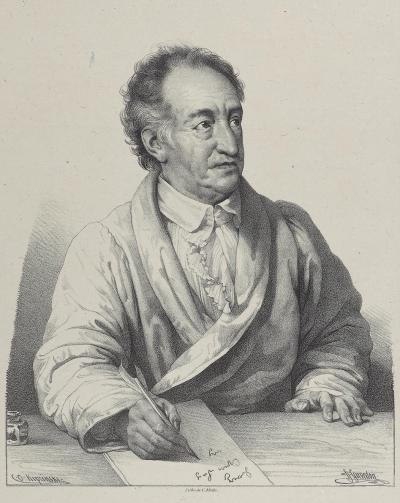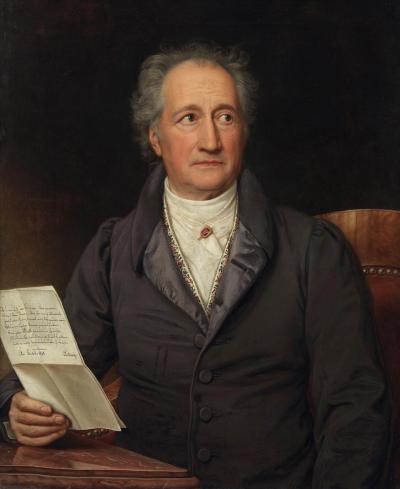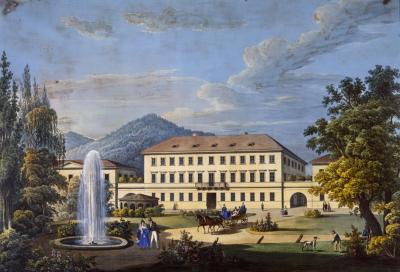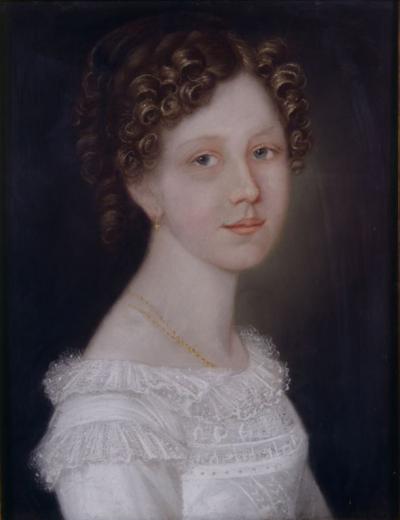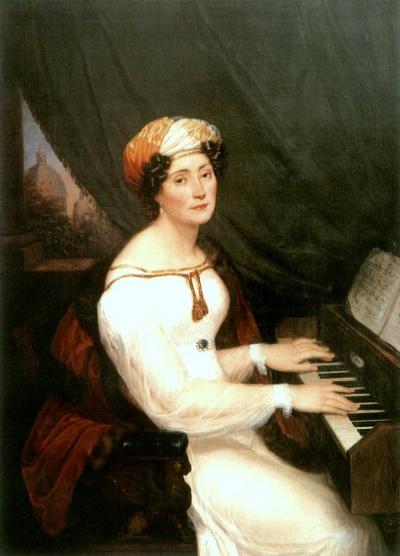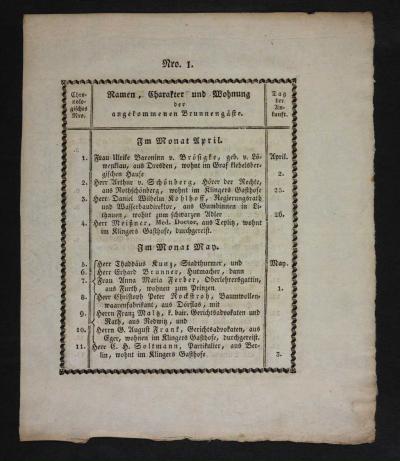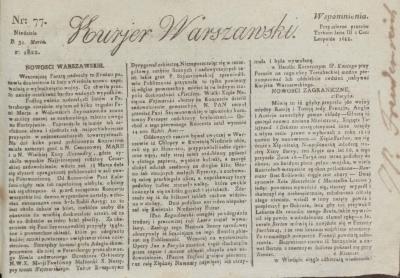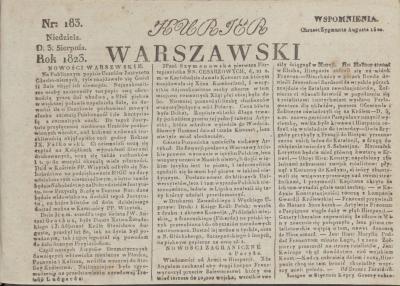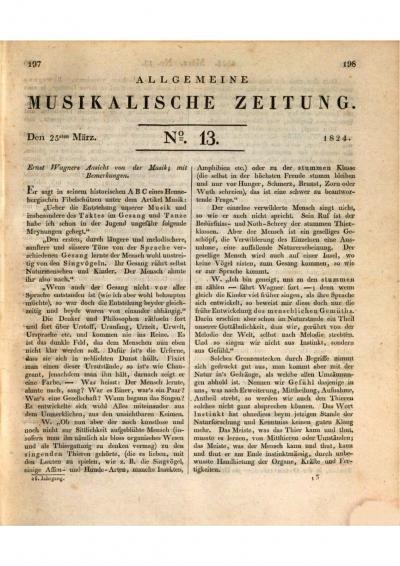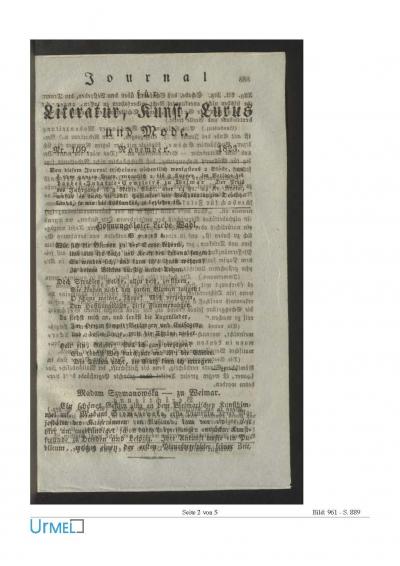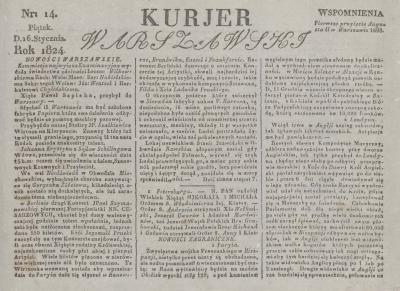Madame Szymanowska and Goethe – a burning love?

After her departure from Marienbad on 7 September 1823, Szymanowska and her siblings travelled to Dresden and Pillnitz via Jena. As the Allgemeine musikalische Zeitung reported, in Dresden she performed at the “Hôtel de Pologne at increased prices”: “She played the first movement of Hummel’s Concerto in H minor, then the Adagio and Finale from the same master’s A minor Concerto, and finally a Rondo in C major by Field. She has a magnificent firm touch to her instruments, combined with tenderness and much expression. Although she took the tempo of the Hummel compositions somewhat more slowly than the composer would like, her playing had more clarity as a result. She played the Rondo by Field with great skill and with all the idiosyncrasy that the compositions by this master demand.”[43] The Kurjer Warszawski reported that the owner of the hotel, a friendly Pole, had let the pianist have the lighting in the room free of charge.[44] She then performed before the king, his family and the court in the summer residence of the Saxon court in Pillnitz. In the same article, the Kurjer Warszawski continued that the monarch had shown himself to be extremely pleased with the concert and had bestowed high praise upon the artist.[45]
Szymanowska then travelled to Berlin. On 2 October, she and Kazimiera wrote to their sister Teresa in Warsaw about the numerous events that they had attended. There were balls every evening and even masquerades. Kazimiera reported on a performance of the opera “Libussa” by Conradin Kreutzer and on the preparations for Szymanowska’s concert on 10 October in the Königlichen Schauspielhaus, which the theatre’s general manager Carl von Brühl wanted to strongly support. Szymanowska added that they intended to visit the Berliner Singakademie with “the Mendelssohns”. At her concert, which Carl Moeser, who would later be the Royal music director, conducted, she played a piano concerto by Hummel, a rondo by Klengel and an adagio by the pianist and composer Friedrich Kalkbrenner, who she was personally acquainted with and who also visited the Mendelssohn’s at home.[46]
Szymanowska must have continued on to Leipzig the next day, where she gave concerts on 13 and on 20 October. Kazimiera wrote to her parents in Warsaw to tell them that the first concert at which the piano concert by Hummel was once more on the program attracted an audience of more than seven hundred. It was the talk of the town. The pianist and composer Friedrich Schneider, Court Conductor from Dessau, who performed in Leipzig the next day, praised Szymanowka’s talent. On the second date, she played a concerto by Klengel, the Sixth Rondo by Field and a septet and a new rondo by Hummel. The music publisher C.F. Peters requested the new rondo so that the music scores would sell better.[47] The Journal für Literature, Kunst, Luxus und Mode published in Weimar summarised by saying: “On 13 Oct. a pianist, Madam Szymanofska, played in a subscriptions concert in Leipzig. She is, without doubt, the most sublime and brilliant pianist that there currently is. Everyone who heard her practising in the days before were captivated by her performance. […] (We reproduce this from a letter from Leipzig, which adds: ‘Mad. S. should be a Polish Countess and will also visit Weimar’.)”[48]
[43] News. Dresden, Month July, August, September, in: Allgemeine musikalische Zeitung, No. 46, Leipzig, 12 November 1823, column 759, online resource: https://www.digitale-sammlungen.de/de/view/bsb10527973?page=390,391
[44] Nowosci Warszawskie, in: Kurjer Warszawski, No. 235, Warsaw, 3 October 1823, page 1, column 2, online resource: https://polona.pl/item/kurjer-warszawski-1823-nr-235-3-pazdziernika,OTc2ODc3NTQ/0/#info:metadata
[45] Compare Bischler 2017 (see Literature), page 70
[46] Kijas 2010 (see Literature), pages 52 f.
[47] Ibid, pages 53 f.
[48] Miscellen, in: Journal für Literature, Kunst, Luxus und Mode, No. 99, October, Weimar 1823, page 816, online resource: https://zs.thulb.uni-jena.de/rsc/viewer/jportal_derivate_00217576/JLM_1823_0884.tif?logicalDiv=jportal_jparticle_00091710. A more detailed review of the concert appeared in the same publication No. 103, November, Weimar 1823, pages 847 f., online resource: https://zs.thulb.uni-jena.de/rsc/viewer/jportal_derivate_00217576/JLM_1823_0915.tif?logicalDiv=jportal_jparticle_00091712, a Polish translation of this article appeared in the Gazeta Warszawska No. 181, Warsaw 14.11.1823, page 2476, online resource: https://polona.pl/item/gazeta-warszawska-1823-nr-181-dod-14-listopada,Mjg1MDUzMDQ/1/#info:metadata
